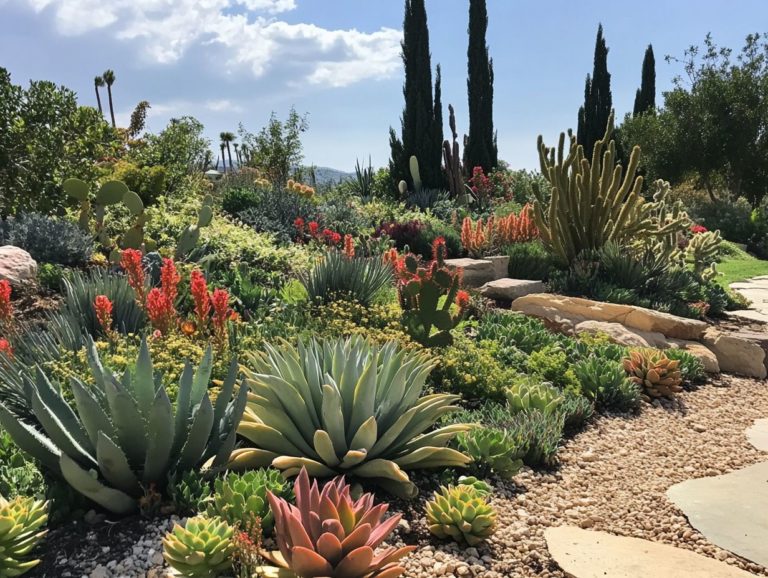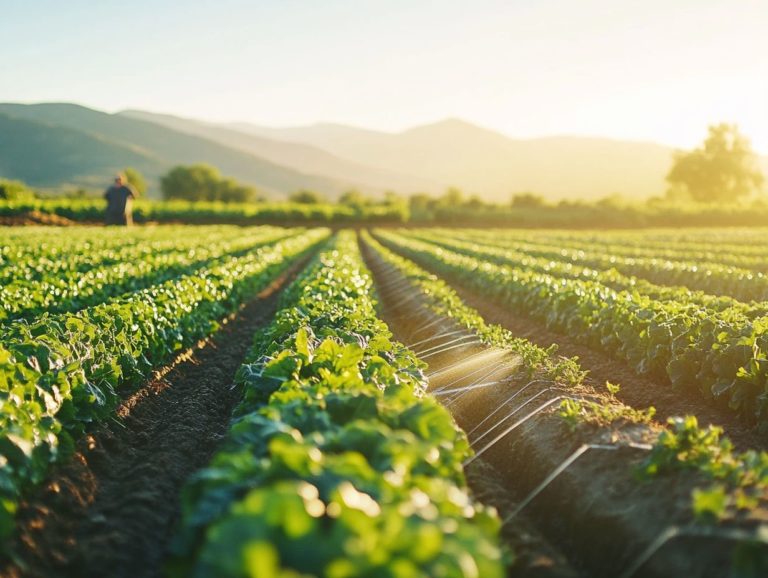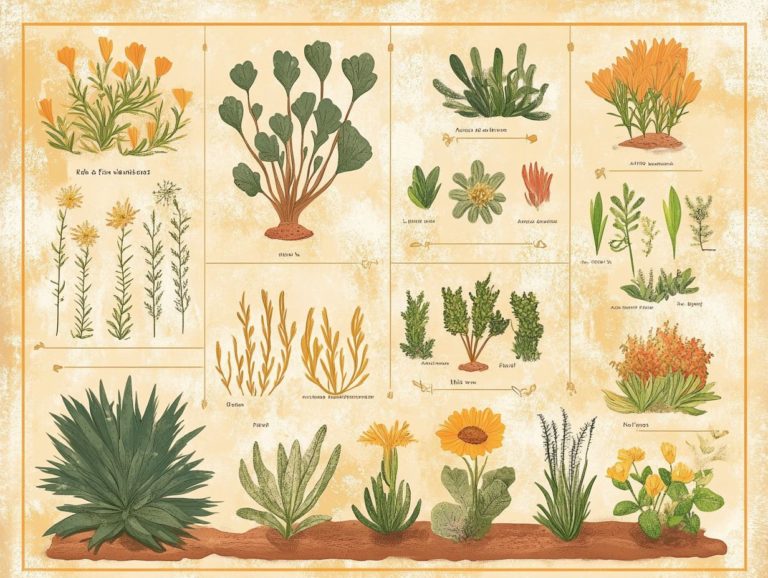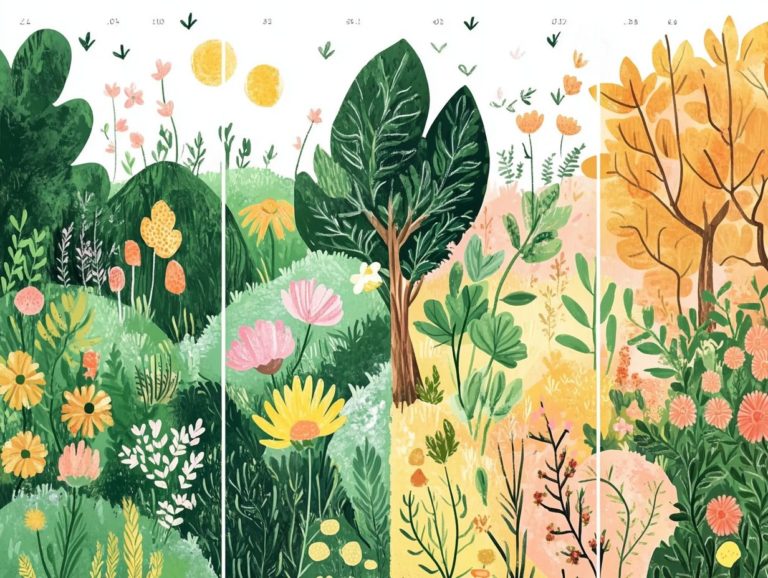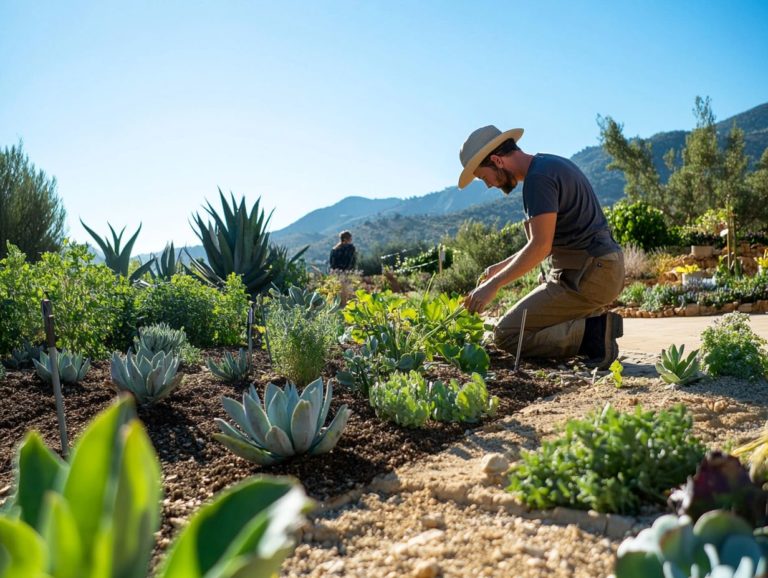Innovative Ideas for Drought Gardening
As climate change escalates, understanding the nuances of drought gardening is crucial for environmental sustainability and personal resilience.
This article covers the basics of drought gardening, including its definition, benefits, how to select drought-resistant plants, and effective water-saving techniques.
Discover innovative strategies to ensure your garden thrives even in dry conditions. Whether you’re an experienced gardener or just starting, these insights will help you cultivate a beautiful, sustainable garden, even in drought-prone areas!
Contents
- Key Takeaways:
- Understanding Drought Gardening
- Benefits of Drought Gardening
- Choosing Drought-Resistant Plants
- Types of Plants to Consider
- Water-Saving Techniques for Drought Gardening
- Innovative Ideas for Drought Gardening
- Frequently Asked Questions
- What are some innovative ideas for drought gardening?
- How can I conserve water while gardening during a drought?
- What are some unique ways to add visual interest to a drought garden?
- Are there creative solutions for growing food in a drought?
- How can I make my drought garden more sustainable?
- Can I still have a beautiful garden during a drought?
Key Takeaways:
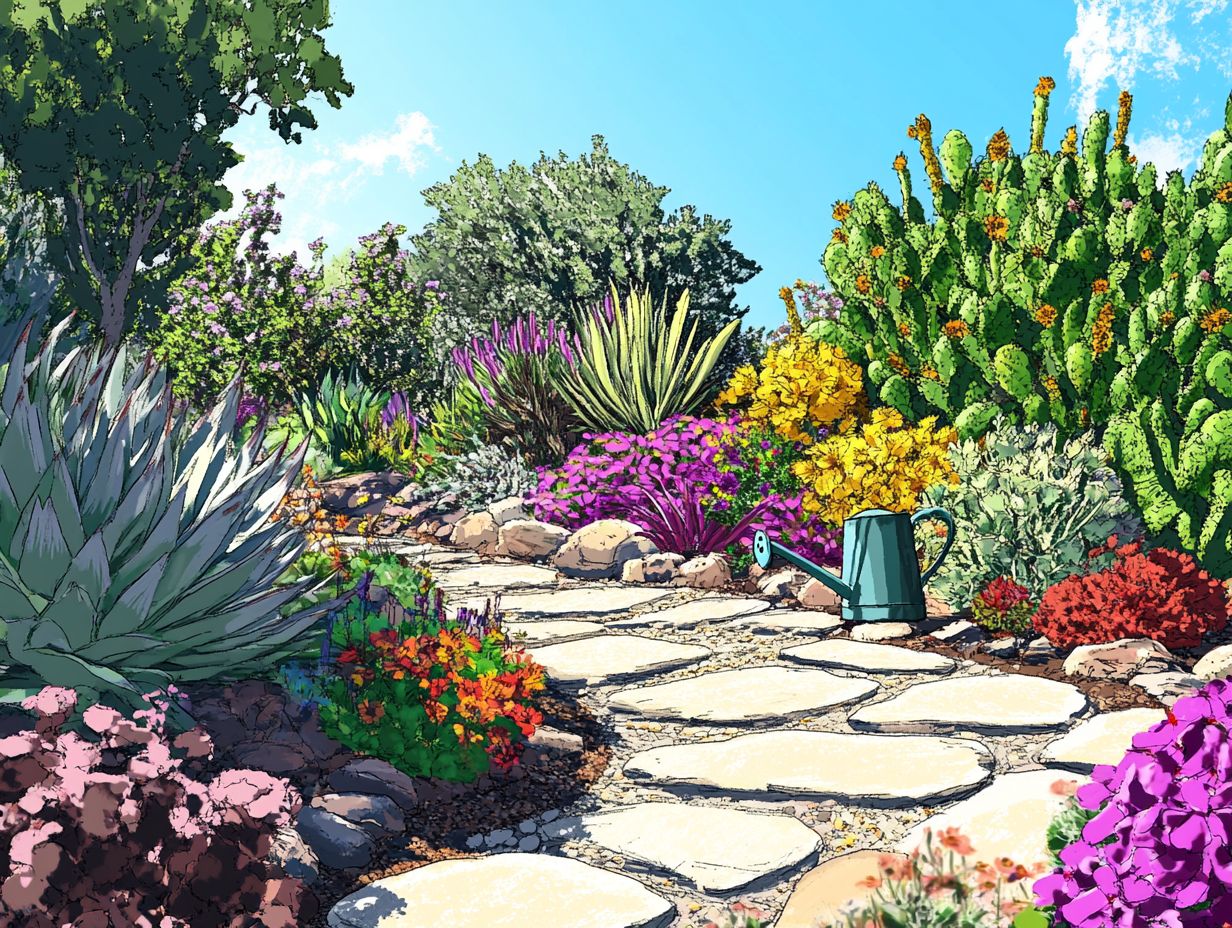
- Drought gardening uses water-saving techniques and selects drought-resistant plants to maintain a garden in areas with limited water.
- It offers environmental and economic benefits, making it a sustainable option for communities facing water scarcity.
- Creative methods for drought gardening include rainwater collection and mulching to keep your garden healthy.
Understanding Drought Gardening
Drought gardening is a sustainable way to grow plants that thrive in low-water conditions. This approach is increasingly important as climate change intensifies global water scarcity. For more information, explore the best resources for drought gardening, which emphasize using drought-resistant plants, efficient irrigation, and soil conservation to create resilient landscapes.
You can significantly reduce water waste by collecting rainwater and using smart irrigation systems, while also enhancing biodiversity and supporting local ecosystems. By grasping the principles of drought gardening, you and your community can adapt your gardening practices to promote sustainability amid ongoing environmental challenges.
What is Drought Gardening?
Drought gardening focuses on cultivating plants that require minimal water, and using rain barrels for drought gardening can be an essential strategy for those in water-scarce regions.
This innovative approach allows you to create sustainable landscapes by selecting drought-resistant species that are well-suited for arid conditions.
Effective soil management is key; by improving soil structure and fertility, you can boost water retention and ensure your plants use available moisture efficiently.
Incorporating practices like mulching and rainwater collection can greatly reduce your water use, making your gardening efforts both effective and environmentally friendly. Embrace these techniques to cultivate a vibrant garden while conserving precious water resources.
Benefits of Drought Gardening
The advantages of drought gardening extend beyond mere water conservation. They provide a range of environmental and economic benefits that are vital for promoting sustainable agricultural practices and enhancing food security in drought-prone areas.
Environmental and Economic Benefits
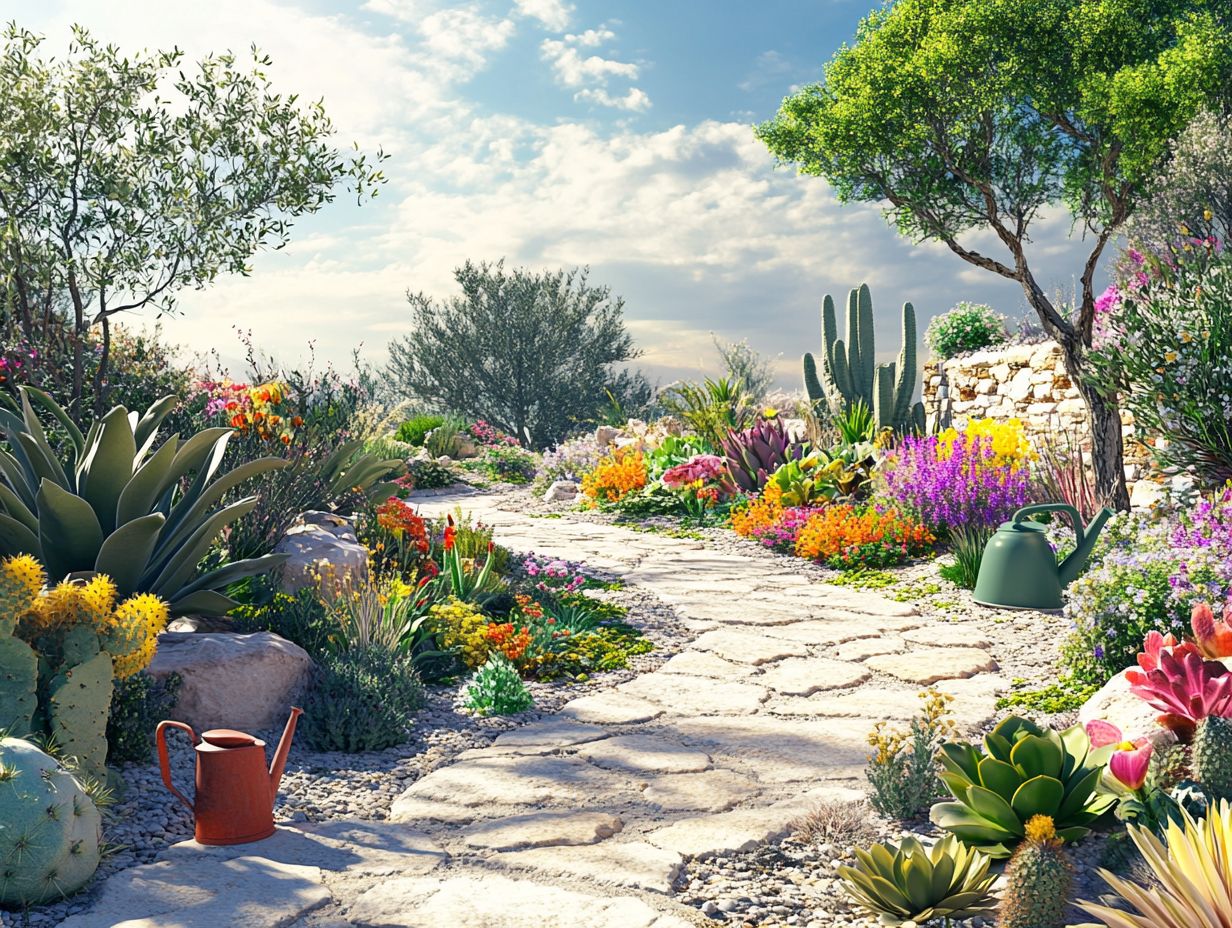
Drought gardening has significant environmental and economic advantages. It boosts biodiversity while lowering agricultural water costs.
Nurturing native plants that thrive in dry conditions plays a crucial role in preserving local ecosystems and creating habitats for wildlife. This approach strengthens the resilience of regional flora and fauna and attracts important pollinators, which are vital for a thriving environment.
From an economic perspective, adopting sustainable practices through drought gardening can greatly reduce irrigation costs, resulting in savings for both farmers and homeowners. Implementing efficient water management techniques ensures agriculture can endure prolonged dry periods, paving the way for a more sustainable future.
Choosing Drought-Resistant Plants
Choosing the right drought-resistant plants is crucial for success in drought gardening. These carefully selected plants conserve water and enhance the overall biodiversity and resilience of your garden.
Start your drought gardening journey today and contribute to a sustainable future!
Types of Plants to Consider
Consider the various types of drought-resistant plants that can transform your garden into a sustainable haven. Native plants, for instance, are beautifully adapted to your local climate and require significantly less water.
These selections conserve water and play a vital role in promoting environmental sustainability by supporting local wildlife. For herbs, varieties like rosemary and sage flourish in arid conditions while imparting delightful flavors to your culinary creations.
Sturdy shrubs such as sagebrush and creosote bush are both resilient and essential, providing critical habitat for numerous species. For a touch of elegance, ornamental plants like succulents and ornamental grasses bring vibrant colors and textures to your outdoor space without the burden of extensive watering.
Each of these plant categories enhances your landscape’s resilience, marrying beauty with reduced resource consumption.
Water-Saving Techniques for Drought Gardening
Using smart ways to save water is crucial for your drought gardening endeavors. Exploring future trends in drought gardening can enhance moisture retention and minimize water waste, ensuring your garden thrives even in challenging conditions.
Irrigation Methods and Water Conservation Strategies
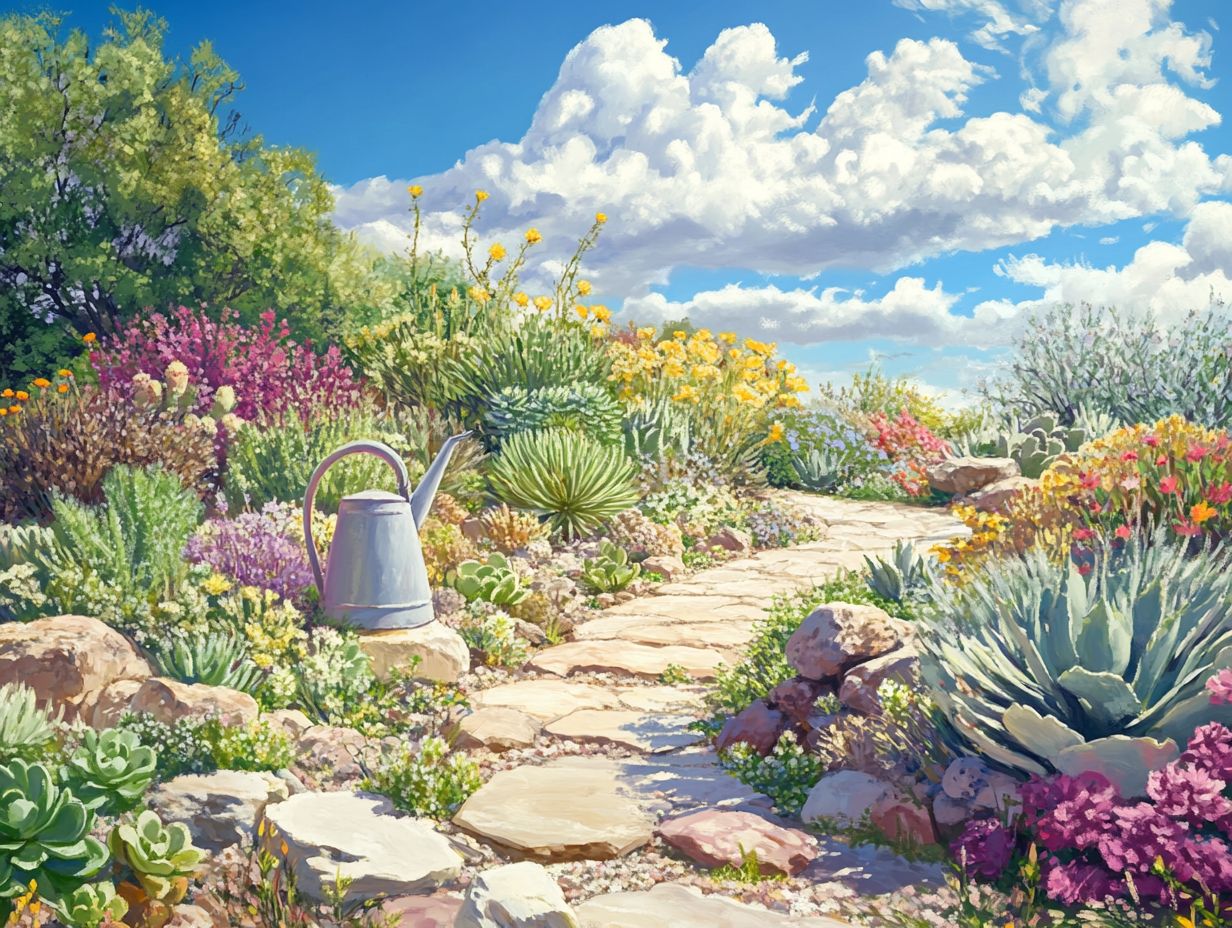
In drought gardening, selecting the right irrigation methods and water conservation strategies is essential for maintaining plant health and minimizing resource use. It’s also important to understand the challenges of drought gardening to ensure successful growth.
By using efficient techniques like drip irrigation, you can significantly enhance moisture retention in the soil, delivering water directly to the roots where it s most needed. This precision reduces evaporation loss and lowers your water bills, making it a wise investment.
Embracing smart irrigation technology that utilizes sensors and weather data allows you to customize your watering schedules, ensuring your plants receive the right amount of water at optimal times. By leveraging these innovative methods, you can promote healthier growth while conserving precious water resources.
Innovative Ideas for Drought Gardening
Innovative approaches to drought gardening offer creative solutions for conserving water while ensuring your landscapes remain vibrant and healthy. Embracing water-saving gardening techniques for drought enhances your garden’s beauty and promotes sustainability in a world where water conservation is paramount.
Creative Ways to Conserve Water and Maintain a Garden
You have a wealth of creative strategies for conserving water in drought gardening, including using native plants to ensure your garden remains vibrant and sustainable without excessive water usage.
By implementing techniques such as using mulch, you can significantly enhance moisture retention in the soil, reducing the frequency of watering. Planting in groups or clusters creates microenvironments that lower evaporation rates, enabling your plants to flourish with less water.
Choosing suitable hardscape materials, like permeable pavers or stones, supports water absorption and drainage, contributing to a resilient garden ecosystem.
By employing these thoughtful strategies, you can cultivate a thriving landscape that is not only visually stunning but also respectful of water conservation efforts.
Final Thoughts and Encouragement for Drought-Prone Areas
Adopting drought gardening practices is essential for building resilience in drought-prone areas, and maintaining a minimalist drought garden can help in crafting a sustainable future.
By embracing techniques such as xeriscaping (landscaping that reduces or eliminates the need for irrigation), mulching, and selecting native plants, you can significantly reduce water consumption while enhancing your landscape s beauty. These methods conserve precious water resources and promote biodiversity, creating habitats for local wildlife.
Implementing sustainable gardening practices helps mitigate soil erosion and improve soil health, positively contributing to the overall ecosystem. As you and your community take steps to adapt to a changing climate, you play a crucial role in preserving the environment for future generations.
Encouraging others to adopt drought-resistant gardening is vital for ensuring a resilient and flourishing planet! Join your neighbors in adopting these practices for a sustainable future!
Frequently Asked Questions
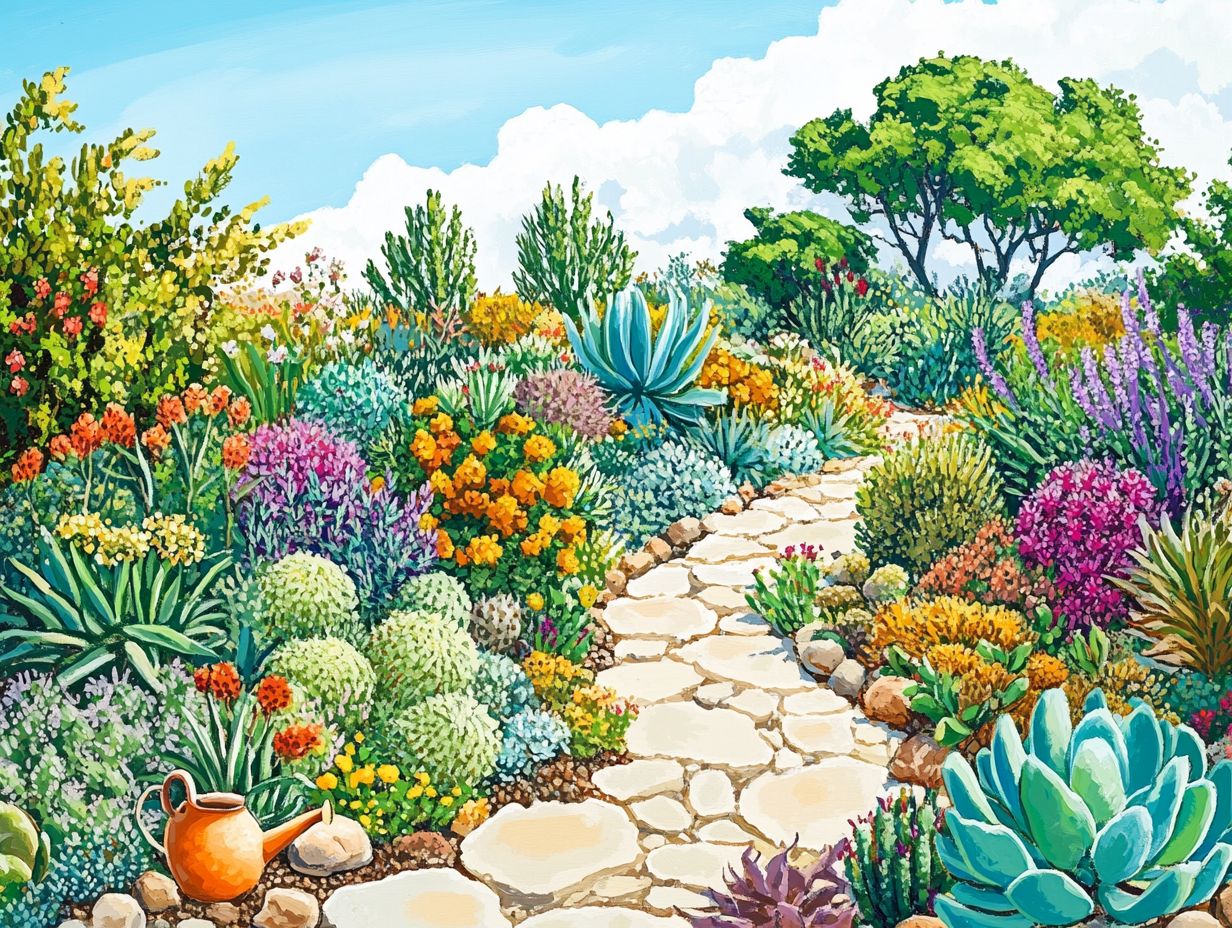
What are some innovative ideas for drought gardening?
Innovative ideas for drought gardening include using rainwater catchment systems. You can also explore innovative techniques for drought landscaping, such as planting succulents and using mulch to retain moisture.
How can I conserve water while gardening during a drought?
You can conserve water by using a system that delivers water directly to the roots. Water deeply and infrequently, and choose drought-resistant plants.
What are some unique ways to add visual interest to a drought garden?
Consider using colorful containers and incorporating drought-tolerant art or sculptures. A rock garden can also support biodiversity.
Are there creative solutions for growing food in a drought?
Yes! Use raised beds with efficient watering systems for better water use. Planting in vertical gardens and using self-watering containers helps too.
How can I make my drought garden more sustainable?
Compost organic matter to improve soil health. Incorporate native plants and use organic methods to boost resilience.
Can I still have a beautiful garden during a drought?
Yes, you can have a stunning garden even during a drought! With vibrant drought-resistant plants and clever planning, beauty thrives alongside conservation.

